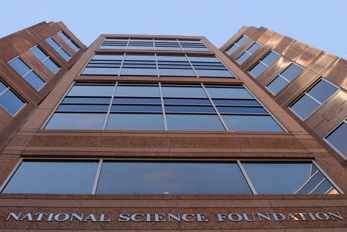During my time at NSF, I had the opportunity to review thousands of proposals in my capacity as a program officer, section head, deputy division director, and acting division director. Unfortunately, most of them had to be declined.
Of course, the funds available were a major limiting factor. (The process by which the budget of the directorate and its programs were determined will be described in a subsequent post.) Some of the proposals were clearly outstanding, but ranked lower in the merit review process than the ones that could be funded. Others were lacking in some way, making them less competitive.
Perhaps the most frustrating reason was that the Principal Investigator (PI) failed to read the program announcement carefully. Occasionally, that meant the proposal had to be returned without review for purely administrative reasons. NSF has certain guidelines, such as font size and number of pages, to be fair to all proposers and reviewers.
More frequently, the PI failed to recognize or respond to program-specific requirements identified in the solicitation. Some of the most glaring errors were proposals to Informal Science Education (ISE, now AISL) that were clearly formal or requested funds for categories not eligible for support. Others, during the review process, did not adequately address such program criteria as innovation and strategic impact, or one or more of the following aspects.
To be competitive, proposals must show how the project builds on prior work. That requires the PI to have learned what works (or doesn’t) from others and explore new ground. They must build on a foundation of educational research, citing key references from the literature. A desired outcome is to add to the knowledge base through research, evaluation, or both. In forming an advisory committee to help guide the project if funded, it is helpful to draw from researchers and practitioners identified in prior work.
Seeking to address inequities in STEM learning, NSF and other funders have placed increasing emphasis on broadening participation by underserved or underrepresented groups. Reviewers can tell when a PI is merely giving lip service rather than seriously addressing this goal. Unless the PI is affiliated with such a group, it is essential to partner with one or more organizations that represent this targeted audience.
Additional organizational or individual strategic partners can also strengthen a proposal. They may provide access to other audiences or bring expertise that expands the capabilities of the project team, such as a learning sciences researcher or informal learning practitioner.
Another key partner should be an evaluator or evaluation firm. The role will vary depending on the project, but should include helping define intended outcomes and impacts in the initial planning phase. Working backwards to develop the most effective strategies for achieving them is recommended. Members of the target audience should also be involved from the onset.
The planning process for a major proposal should start a year in advance of the submission deadline. Especially for new PIs, it would be valuable to discuss preliminary ideas by email with a program officer. They are glad to provide feedback and will likely have useful comments based on their knowledge of the field.
Finally, it would be helpful to subject the draft proposal to “review” prior to submission by people not involved in its development. For example, I have played that role, identifying areas that can be strengthened to make proposals more competitive.
These suggestions are summarized in the Proposal Preparation Checklist below.
Related Articles
Ucko, D. A. (2010). NSF influence on the field of informal science education. Center for Advancement
of Informal Science Education, 1-29. https://www.informalscience.org/sites/default/file/NSFImpactonISE.pdf
Ucko, D. A. (2008). Forward. In A. Friedman (Ed.), Framework for evaluating impacts of informal
science education projects: Report from a National Science Foundation workshop (pp. 9-13). National
Science Foundation. https://www.informalscience.org/sites/default/files/Eval_Framework.pdf
Resources
Proposal Preparation Checklist
NSF Education & Human Resources Directorate
https://www.nsf.gov/dir/index.jsp?org=EHR
NSF Proposal & Award Policies & Procedures Guide
https://nsf.gov/publications/pub_summ.jsp?ods_key=pappg
